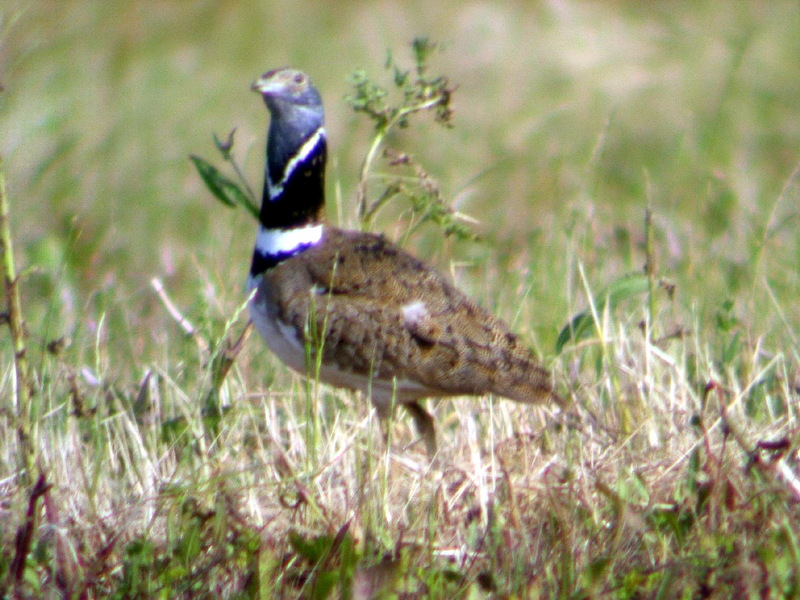Little Bustard (Tetrax tetrax) - Wiki Little Bustard
From Wikipedia, the free encyclopedia
Order: Gruiformes
Family: Otidae
[Photo] Little Bustard (Tetrax tetrax) male. Date: 2006-04-26. Author: Renato Pacchioni.
Copyright (C) 2006 Renato Pacchioni
Permission is granted to copy, distribute and/or modify this document under the terms of the GNU Free Documentation License, Version 1.2 or any later version published by the Free Software Foundation; with no Invariant Sections, no Front-Cover Texts, and no Back-Cover Texts. A copy of the license is included in the section entitled "GNU Free Documentation License". |
The
Little Bustard,
Tetrax tetrax, is a large bird in the
bustard family, the only member of the genus Tetrax. It breeds in southern and central Europe and into western and central Asia. Southernmost European
birds are mainly resident, but other populations migrate further south in winter.
This species is declining due to habitat loss throughout its range. It used to breed more widely, for example ranging north to Poland occasionally (Tomek & Boche??ski 2005). It is only a very rare vagrant to Great Britain despite breeding in France.
Although the smallest Palearctic
bustard,
Little Bustard is still pheasant-sized at 45 cm long with a 90 cm wingspan. In flight, the long wings are extensively white. The breeding male is brown above and white below, with a grey head and a black neck bordered above and below by white.
The female and non-breeding male lack the dramatic neck pattern, and the female is marked darker below than the male. Immature
bustards resemble females. Both sexes are usually silent, although the male has a distinctive "raspberry-blowing" call "prrt".
This species is omnivorous, taking seeds, insects and other small creatures. Like other
bustards, the male
Little Bustard has a flamboyant display with foot stamping and leaping in the air. Females lay 3 to 5 eggs on the ground.
This bird's habitat is open grassland and undisturbed cultivation, with plants tall enough for cover. It has a stately slow walk, and tends to run when disturbed rather than fly. It is gregarious, especially in winter.
http://en.wikipedia.org/wiki/Little_Bustard| The text in this page is based on the copyrighted Wikipedia article shown in above URL. It is used under the GNU Free Documentation License. You may redistribute it, verbatim or modified, providing that you comply with the terms of the GFDL. |
